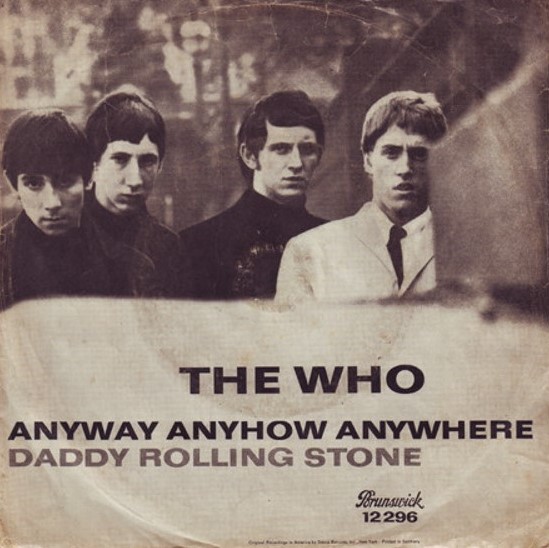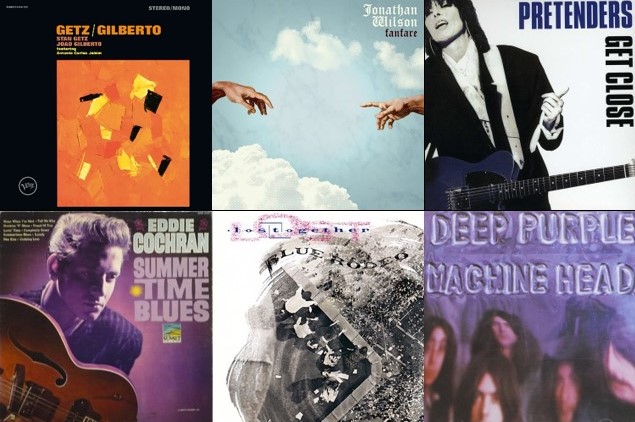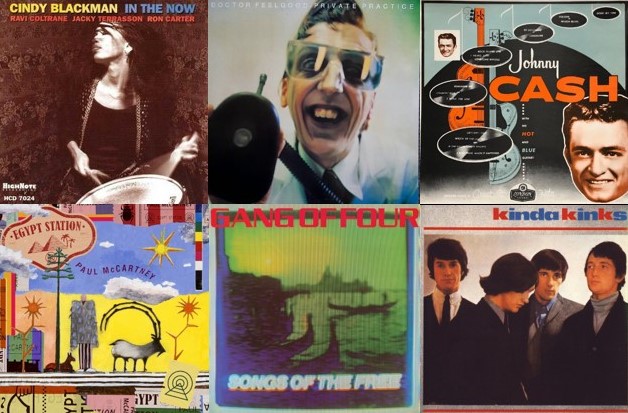Once again, Dave from A Sound Day recently reached out to a bunch of fellow bloggers to invite their thoughts on the latest topic for his monthly recurring fun feature Turntable Talk. This time, his ask was to write about an instrumental we like a lot. Following is my humble contribution, which was first published on Dave’s blog on January 12.
While it’s safe to assume most of us had things we happily kissed goodbye or wish could get rid of once and for all when 2023 came to its close, it’s great to see when beloved things continue. In my mind, the latter include Turntable Talk, which remains one of the most fun blogging activities each month thanks to fellow blogger Dave who always comes up with great topics!
For Round 22, Dave asked us to forget about the words, if you will, and share some thoughts on an all-instrumental we dig. If you’re familiar with my music taste, you know how much I love vocals, especially when sung in perfect harmony. As such, you might think I may have a hard time finding an instrumental I really like. Well, not really.
In fact, I knew right away which tune I would write about. Then I thought, ‘well, perhaps not so fast!’ After all, there are multiple instrumentals I dig, such as Monty Norman’s James Bond Theme, The Shadows’ Apache, Fleetwood Mac’s Albatross and The Allman Brothers Band’s Jessica. Heck, even my favorite hard rock band Deep Purple penned a great instrumental titled April.
After I had thought about the above and a few additional instrumentals, I decided to go Brooklynite, cheerfully concluding ‘fuhgeddaboudit!’ So I went back to my initial pick, hoping nobody else will choose it: Green Onions by Booker T. & the M.G.’s.
Why Green Onions? Coz it’s a friggin’ awesome tune with a cool sound and a simple, yet infectious groove that makes you want to snip your fingers or engage other parts of your body to move along! Green Onions also is an instrumental with a nice background story.
Originally, the 12-bar blues with its distinct Hammond organ sound was composed by Booker T. Jones when he was 17. This was around 1961 and, as such, predated The M.G.s. At that time, remarkably, Jones already was a professional musician and had played baritone saxophone on the recording of Cause I Love You by Carla Thomas and Rufus Thomas – the first hit single for Satellite Records, which soon would become Stax Records.
The M.G.s who in addition to Jones (organ, piano, keyboards, guitar) originally featured Steve Cropper (guitar), Lewie Steinberg (bass) and Al Jackson Jr. (drums), came together in 1962. Serving as Stax’ house band, they played on countless recordings by the label’s artists, such as Wilson Pickett, Otis Redding, Sam & Dave, Carla Thomas and Rufus Thomas. And rockabilly singer and Sun Records recording artist Billy Lee Riley.
When on a Sunday in June 1962 Riley didn’t show up for a scheduled recording session, Booker T. & the M.G.s began jamming to a tune Jones initially had written on piano but felt it sounded better with a Hammond organ. Stax co-owner Jim Stewart liked what he heard and decided to record the track, Behave Yourself, with the idea to release it as a single. Once it was in the can, they needed a B-side. That’s when the magic happened.
Jones started playing his “old” composition on the Hammond. The other members of the M.G.’s began improvising to it. The end result was Green Onions, which initially was titled Funky Onions. However, Stewart’s sister and Stax label co-owner Estelle Axton (Stax = Stewart-Axton) felt Funky Onions sounded like swearing. Therefore, it was renamed Green Onions.
After they had recorded Green Onions, Cropper took a copy of the tune to Memphis radio station WLOK where he was friendly with morning DJ Rueben Washington. All Washington needed to hear was part of the track. He cut off the record that was on the air and started playing Green Onions several times. The phone lines lit up quickly and the rest is history.
Green Onions, which subsequently became the A-side of the single, peaked at no. 3 in the U.S. on the Billboard Hot 100 in late September 1962. The track also topped the R&B Singles chart for a combined (non-consecutive) four weeks.
About 17 years later, in December 1979, Green Onions entered the UK Singles Chart after it had been featured in Quadrophenia, a 1979 British drama film that was loosely based on The Who’s 1973 rock opera of the same name. Eventually, it peaked at number no. 7 in late January 1980 and stayed on the British chart for 12 consecutive weeks!
I’ll leave you with a few quotes related to Green Onions, as documented by Songfacts:
“If we released this as a record, what would you want to call it?” “Green Onions,” was Booker T. Jones’ reply. “Why ‘Green Onions'” Jim asked. Booker T: “Because that is the nastiest thing I can think of and it’s something you throw away.” – dialogue between Jim Stewart and Booker T. Jones
“‘Green Onions’ appears to be a simple song, but every time I play it, I have to pay attention. I have to remember, and school myself on how the notes go, because it’s just not as simple as it sounds.” – Booker T. Jones
“When you’re a successful songwriter, you might see your songs get in movies, cartoons, commercials. But I never knew that I would be a co-writer on a song for adult diapers (laughs). For four years ‘Green Onions’ was in a commercial for Depends. That song’s gone from adult diapers to pita chips and now it’s in a dog food commercial. As soon as they get through with it someone else will use it.” – Steve Cropper
Sources: Wikipedia; Songfacts; YouTube














